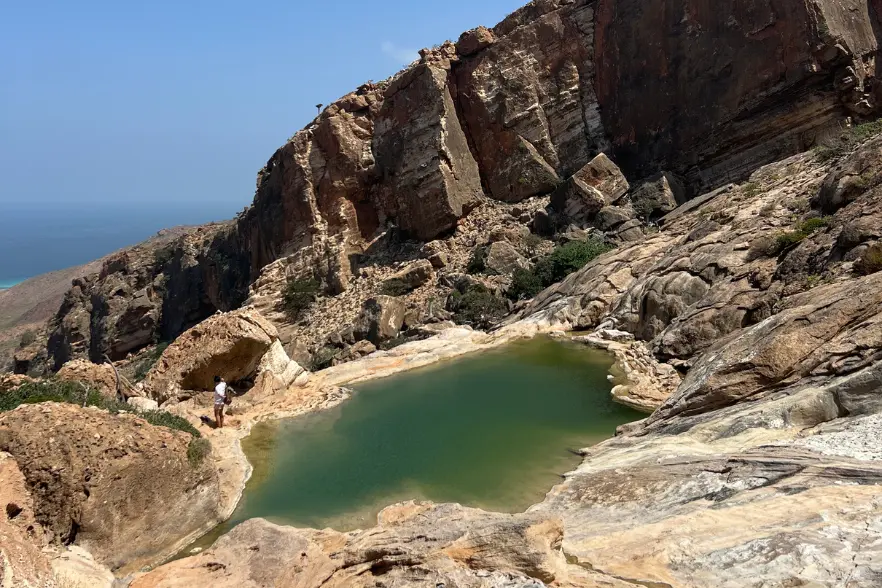Socotra is a remote Yemeni island adrift in the Arabian Sea. Often called the ‘Galapagos of the Middle East’, Socotra has been separated from the rest of the world for millions of years. This is a place where nature feels otherworldly: landscapes that seem almost out of science fiction, bizarre endemic plants found nowhere else on Earth, rare wildlife, and a culture largely untouched by the modern world. The Socotri people have their own language and traditions. They rely on fishing, herding, and, increasingly, tourism, amidst a delicate geopolitical situation involving mainland Yemen and the influence of the UAE. We spent a week camping among its mountains, beaches, and freshwater pools, with only very basic infrastructure. What may seem like the ultimate haven set apart from the world actually made us feel profoundly connected to its welcoming people and nature. After all, no man is an island.
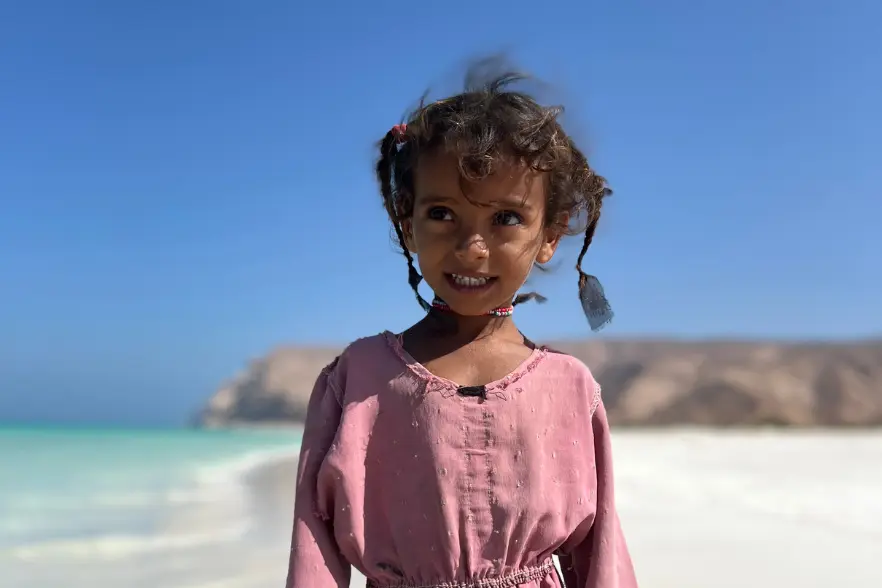
Trekking to Skand Peak
The Hajhir Mountains lie at the heart of the island. Their highest point is Skand Peak, reachable via a full-day trek (often with a local Bedouin guide leading the way) along ancient shepherds’ trails. We start with the enchanting Ferhmin Forest – a rare patch of ancient woodland home to the island’s most iconic plant: the dragon’s blood tree. The name of this iconic umbrella-shaped tree, only found in Socotra, comes from the deep red sap it produces, which has been prized for centuries for its medicinal and dyeing properties. On the way up, we pause at our guide family’s mountain hut, where we’re offered fresh cow’s milk before reaching the summit. Here, we find ourselves surrounded by the mist that often lingers around Skand, adding an almost ethereal quality to the views of the Arabian Sea and the Socotran coastline below.
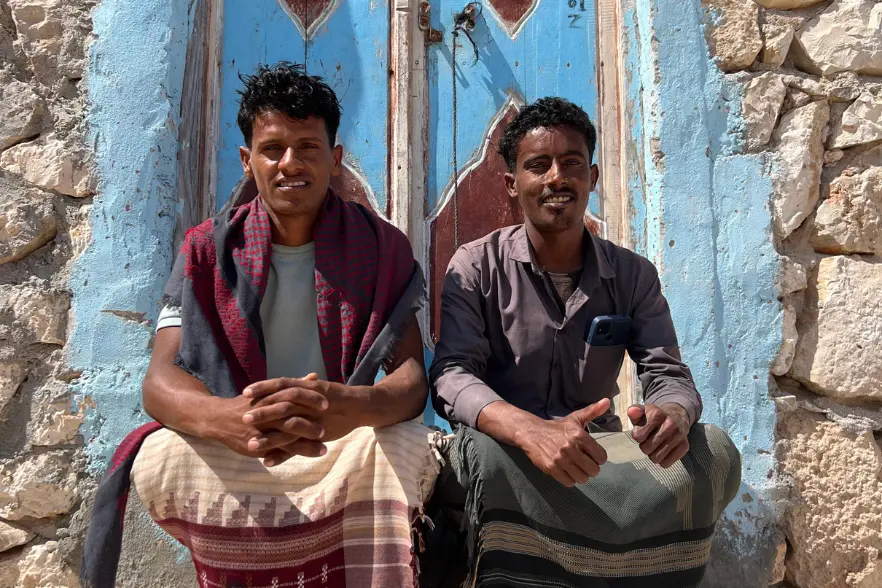
The Sand Dunes of Arher
Another famous landmark of the island, the white sand dunes of Arher, formed by monsoon winds, rise like a mirage against the sea. It is a tough climb to the top, usually done at dawn, but the views of the ocean and landscape are worth every step. At sunset, the dunes glow with golden light, and freshwater streams create unexpected oases. Camping here under the stars, maybe after a fresh lobster dinner, is a highlight of the trip.
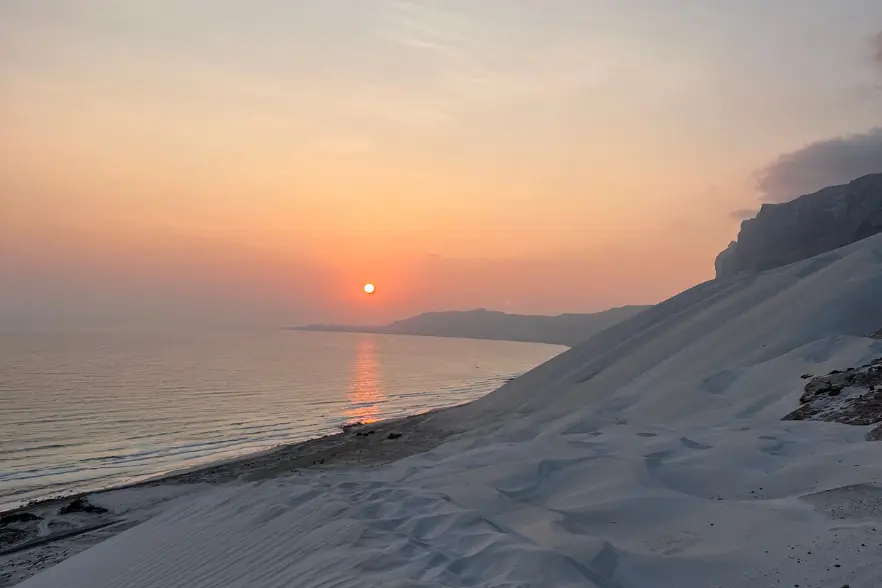
Socotra’s Secret Pools
Two of Socotra’s most magical swimming spots are tucked into its wild landscapes. The Homhil pool, reached by a shorter hike through dragon’s blood and frankincense trees, is a true natural wonder. Perched on the edge of a cliff, its cool, clear water offers a refreshing dip and breathtaking views over the valley and out to the sea. Wadi Ayhaft, meanwhile, is a lush canyon known as Socotra’s natural nursery. After trekking through the wadi, there’s nothing better than a swim in these crystal-clear pools – or, for the adventurous, leaping from the high rocks into the water below.
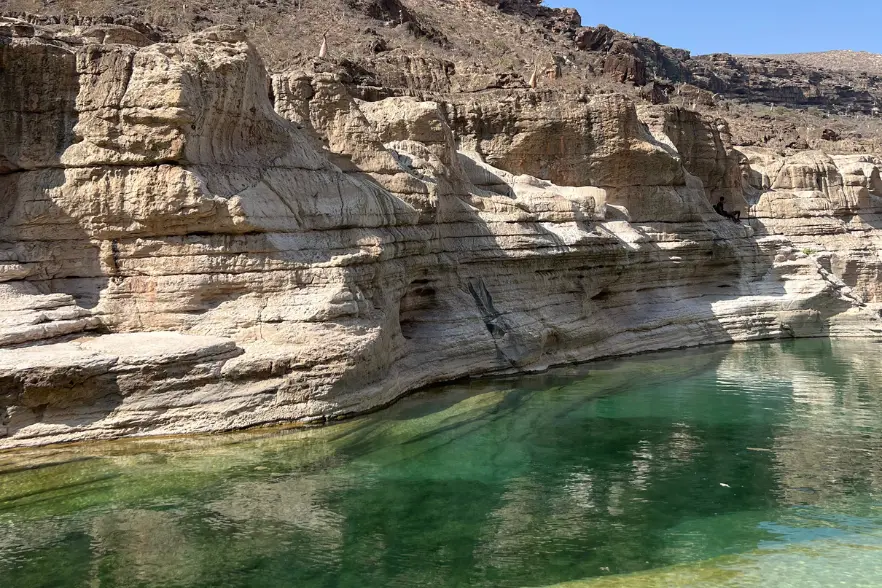
Underwater Wonderland
Socotra’s magic clearly isn’t limited to the land. The Dihamri Marine Protected Area is a snorkeler’s dream, home to more than 80 coral species and 150 types of fish. Parrotfish, moray eels, rays, and the occasional turtle glide around. Even though we were only snorkeling, the underwater world was so mesmerizing that we found ourselves signing up for a diving course once back in Kenya!
Shuab Beach: The Edge of Paradise
Getting to Shuab is an adventure in itself. We boarded a small boat in Qalansiyah, on the west of the island, and set out across the most turquoise waters. While the boat skirts dramatic cliffs, a pod of dolphins surfaces nearby and starts playing around us – a truly unforgettable moment. When we arrive, Shuab’s five-kilometer stretch of powdery white sand and clearest water completely stuns us. The beach is so remote that it often feels like our own private paradise, with only a handful of fishermen living in simple huts at the far end of the beach. We’re invited to share tea with them, and offered a rare glimpse into a way of life unchanged for generations.

Curious about what your next adventure could look like? Reach out and let’s brainstorm together!

